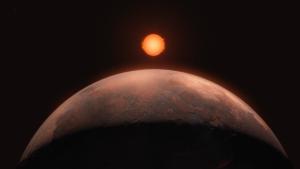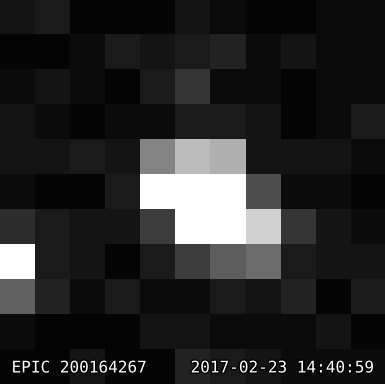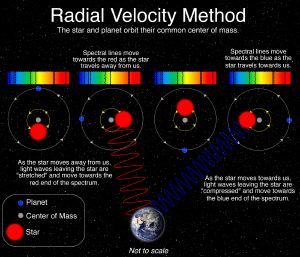Blog
Off Again, On Again
2 October 2024
 ESO/M. Kornmesser
ESO/M. KornmesserThe thing about exoplanets is that astronomers don’t see them the way most people think they do. Part of the reason for that is the way we announce them. Whenever an interesting exoplanet is discovered, the press release usually has colorful artwork showing oceans, mountains, and clouds. Something visually captivating like the image above. But the reality is that we have only imaged a few exoplanets directly, and even then, they appear only as small fuzzy blobs. Most of the known exoplanets were discovered by the transit method, where the star dims slightly as the planet passes in front of it. So what astronomers actually see is a periodic flickering of starlight.
 EPIC
EPICThis isn’t a problem for astronomers, since they are interested in data, not pretty pictures. Usually, the data is strong enough to confirm the presence of an exoplanet without directly observing it. But sometimes the observational data can be a bit more fuzzy, and that means we might think a planet is there only for further observations to prove us wrong. So sometimes an exoplanet is announced, only for the discovery to be retracted later. But sometimes a planet is confirmed, then unconfirmed, then confirmed again, as in the case of a recent study of Barnard’s star.1
 Las Cumbres Observatory
Las Cumbres ObservatoryBarnard’s star is a small red dwarf just 6 light-years from Earth. Back in 2018, observations of the star suggested the presence of a Super-Earth sized companion named Barnard b.2 What’s interesting about this exoplanet is that it wasn’t discovered by the usual transit method but by a different approach known as the radial velocity method. As a planet orbits a star, the gravitational pull of the planet causes the star to wobble slightly toward and away from us. Since the relative motion of the star can cause its spectrum to shift slightly, we can observe the shift to know if the planet is there. But the radial velocity method is more difficult to do than the transit method, which is part of the reason fewer exoplanets have been discovered this way. And in this particular case, the data was fairly tenuous, and so Barnard b was shifted to the unconfirmed category.
This new study finds that the 2018 discovery was a false positive. The data doesn’t support the existence of a super-Earth orbiting Barnard’s star. But the data does confirm the presence of an exoplanet. Barnard b does exist, just not the one we thought. This newly confirmed planet isn’t a super-Earth, but rather has less mass than our world. It orbits the star every 3 days, which is part of the reason it was so difficult to detect.
It took 5 years of observational data to confirm this exoplanet, which just reinforces how difficult it is to find planets this way. But the good news is that the data hints at the presence of other planets as well. It will take more data and study to confirm them, but it’s quite possible that Barnard’s star has a whole system of small worlds, similar to the TRAPPIST-1 system.